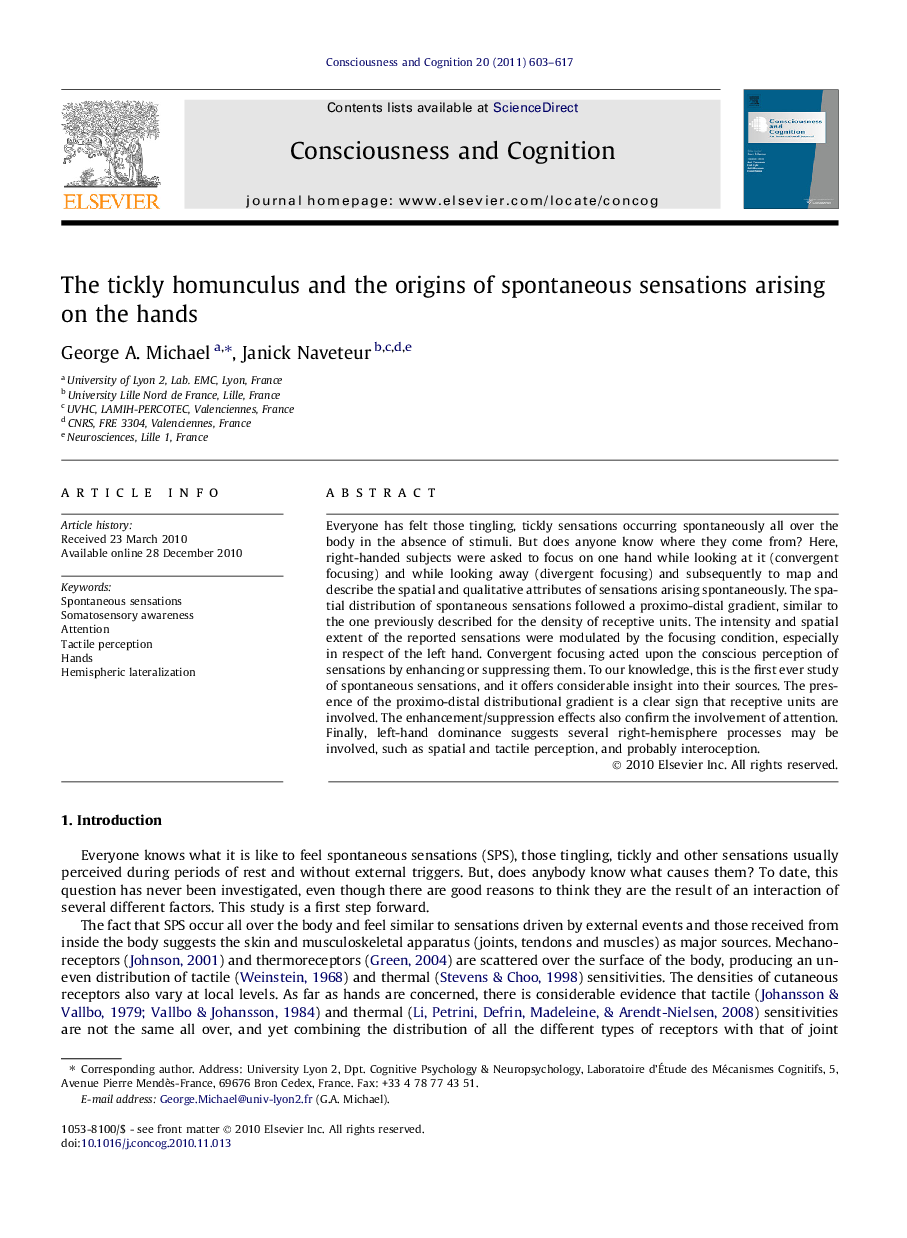| Article ID | Journal | Published Year | Pages | File Type |
|---|---|---|---|---|
| 10458693 | Consciousness and Cognition | 2011 | 15 Pages |
Abstract
Everyone has felt those tingling, tickly sensations occurring spontaneously all over the body in the absence of stimuli. But does anyone know where they come from? Here, right-handed subjects were asked to focus on one hand while looking at it (convergent focusing) and while looking away (divergent focusing) and subsequently to map and describe the spatial and qualitative attributes of sensations arising spontaneously. The spatial distribution of spontaneous sensations followed a proximo-distal gradient, similar to the one previously described for the density of receptive units. The intensity and spatial extent of the reported sensations were modulated by the focusing condition, especially in respect of the left hand. Convergent focusing acted upon the conscious perception of sensations by enhancing or suppressing them. To our knowledge, this is the first ever study of spontaneous sensations, and it offers considerable insight into their sources. The presence of the proximo-distal distributional gradient is a clear sign that receptive units are involved. The enhancement/suppression effects also confirm the involvement of attention. Finally, left-hand dominance suggests several right-hemisphere processes may be involved, such as spatial and tactile perception, and probably interoception.
Related Topics
Life Sciences
Neuroscience
Cognitive Neuroscience
Authors
George A. Michael, Janick Naveteur,
